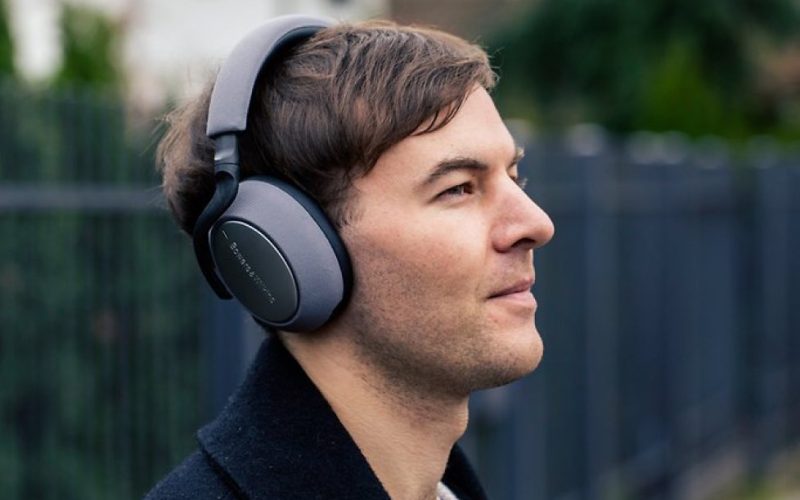Introduction
Neural Headphones are an innovative fusion of advanced audio technology and neural interfaces. This groundbreaking technology is designed to revolutionize the way we experience personal audio by merging the precision of neural data with high-quality sound delivery. The concept of Neural Headphone is to create a seamless connection between the user’s brain and the audio device, allowing for an unprecedented level of control and customization in audio experiences. By leveraging neural interfaces, these headphones can adapt to the user’s cognitive and emotional states, providing a more immersive and personalized listening experience. This marks a significant leap forward in personal audio technology, promising to transform how we consume music, podcasts, and other audio content.
Technological Advancements in Neural Audio
One of the most significant advancements brought by Neural Headphones is the enhanced sound quality they offer. Traditional headphones rely on fixed parameters for sound output, but Neural Headphones utilize neural data to dynamically adjust and optimize sound quality in real-time. This means that the audio output can be fine-tuned to the listener’s preferences and physiological responses, resulting in a richer and more accurate auditory experience. Additionally, Neural Headphones provide personalized audio experiences by analyzing the user’s neural signals and adjusting sound settings accordingly. This personalization extends beyond simple equalizer adjustments, encompassing a holistic approach that considers the user’s mood, concentration levels, and even specific hearing sensitivities to deliver a truly tailored listening experience.
Benefits of Neural Headphones
The primary benefit of Neural Headphones lies in their ability to deliver enhanced audio precision. By integrating neural interfaces, these headphones can detect subtle changes in the user’s brain activity and adjust the audio output to match. This results in a level of sound clarity and detail that is unmatched by traditional headphones. Furthermore, Neural Headphones offer personalized sound experiences that cater to the unique auditory preferences and needs of each user. Whether it’s adjusting the bass for a more immersive music experience or fine-tuning the treble for clearer speech in podcasts, Neural Headphones ensure that the audio output is always optimized for the individual listener.
Market Potential and Adoption
The market potential for Neural Headphones is vast, with a rapidly expanding global market that shows high growth potential. As technology continues to advance and become more integrated into our daily lives, the demand for innovative audio solutions like Neural Headphones is expected to increase. This is particularly true in tech-savvy demographics, where rapid adoption of new technologies is common. Early adopters and enthusiasts in these demographics are likely to embrace Neural Headphones for their advanced features and personalized audio experiences. As awareness and accessibility of Neural Headphones grow, they are poised to become a mainstream audio solution with widespread adoption across various consumer segments.
Impact on the Music Industry
Neural Headphones have the potential to significantly impact the music industry by enhancing sound quality and the overall listener experience. For musicians and producers, these headphones offer a new level of precision in sound engineering, allowing for more accurate mixing and mastering of tracks. For listeners, the ability to experience music with personalized audio settings means that each individual can enjoy music in the way that best suits their preferences and auditory needs. This level of customization can lead to a deeper and more engaging connection with the music, potentially transforming how we experience and appreciate musical content.
Challenges in Developing Neural Headphones
Despite their promising potential, the development of Neural Headphones is not without its challenges. One of the primary technical hurdles is the complexity of accurately processing neural signals. Neural data is highly intricate and requires sophisticated algorithms to interpret and utilize effectively. Ensuring that these algorithms can operate in real-time and adapt to the constantly changing neural signals is a significant engineering challenge. Additionally, there are ethical concerns related to user data security. Neural Headphones collect sensitive neural data, which raises questions about privacy and the potential misuse of this information. Developers must address these concerns by implementing robust data protection measures and ensuring that users have control over their own neural data.
Future Prospects and Innovations
Looking ahead, the future prospects for Neural Headphones are incredibly promising. Continued advancements in Neural Headphones technology are expected to further enhance sound quality, making audio experiences even more immersive and precise. The integration of artificial intelligence (AI) holds significant potential for further innovation in personalized audio experiences. AI can analyze vast amounts of neural data and learn from user preferences to continuously improve and adapt the audio output. This means that Neural Headphones will not only provide a high level of customization but will also evolve with the user, offering increasingly refined and personalized sound experiences over time. As these technologies continue to develop, Neural Headphones are set to become a staple in the world of personal audio, offering unparalleled audio experiences that cater to the unique needs and preferences of each listener.










